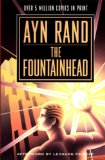Olivier Langlois's blog
Category: TCP/IP
06/15/07
Internetworking with TCP/IP volume 3
I want to set the expectations straight. This is not the best Winsock programming book. This book address higher level issues with network programming and it does a very good job at it. It is going to presents the different options for writing a server such as concurrent vs iterative or single thread vs multithread and explains carefully the tradeoff of each option. In my opinion that is the strength and the originality of the book. Another favorite part of the book is the presentation of the complete implementation of a telnet client where the author leads you through all the design and implementation process by explaining you the reasoning behind each decision.
What I did not like about the book is that like the volume 1, too many topics are covered so in many chapters the author barely touch the topic without going in depth into it and I am questioning the value of these chapters as reference.
This is the Windows version but there is also a Linux/Posix Sockets and a BSD sockets versions.
Internetworking with TCP/IP volume 2
This book goes in depth in how TCP/IP works by showing an actual working TCP/IP stack ANSI C code source. I am a believer that in order to fully understand and effectively use a piece of software, the best way to achieve this goal is to actually study at least once its source code. You will certainly get many insights in how TCP/IP works by reading this book. Unfortunately, for most readers, this will remain a theoretical exercise. I got the opportunity to work with the source code of an embedded TCP/IP stack when I was working at Nortel Networks and actually found a bug with the help of this book. That was at that moment that I truly realized the value of this volume.
Internetworking with TCP/IP volume 1
This book describe the TCP/IP family protocols. Of course, there is so much to say that in the limited space that a book can offer that I would say that the book presents only a quick overview of the protocols. Fortunately, at the end of each chapter, there are pointers on the relevant RFCs for the discussed topic in that chapter. My next statement is an impression and not a proven fact but by having read the first edition a long time ago, I have the impression that some details have been removed in this edition in favor of a better coverage of more new protocols. That being said, the information contained in the book is extremely accurate and the book is very useful when analyzing the output of a packet sniffer such as WireShark (previously known as Ethereal).
Olivier Langlois's blog
I want you to find in this blog informations about C++ programming that I had a hard time to find in the first place on the web.
| Sun | Mon | Tue | Wed | Thu | Fri | Sat |
|---|---|---|---|---|---|---|
| << < | > >> | |||||
| 1 | 2 | 3 | 4 | 5 | ||
| 6 | 7 | 8 | 9 | 10 | 11 | 12 |
| 13 | 14 | 15 | 16 | 17 | 18 | 19 |
| 20 | 21 | 22 | 23 | 24 | 25 | 26 |
| 27 | 28 | 29 | 30 | 31 | ||
Search

Categories
Olivier Langlois's blog
- AAC (2)
- Book reviews (12)
- C++ (24)
- Code Optimization (4)
- Compiler (3)
- Fractal (2)
- Linux/UNIX (3)
- Multithreading (3)
- Software security (7)
- TCP/IP (8)
- Web (1)
- Windows programming (19)
- C++ (28)
- tutorials (4)
- General (10)
- Hardware reviews (2)
- Linux (12)
- Recommended books (4)
- C++ (20)
- Code Optimization (2)
- Compiler (3)
- Fractal (2)
- Linux/UNIX (1)
- Multithreading (2)
- Rare out of print (3)
- Software security (5)
- TCP/IP (7)
- Windows programming (16)
- Software reviews (0)
- TCP/IP (8)
- Video games (4)
Archives
- January 2016 (1)
- September 2015 (1)
- July 2015 (1)
- June 2015 (1)
- May 2015 (1)
- December 2013 (3)
- September 2013 (1)
- May 2013 (8)
- April 2013 (1)
- December 2010 (1)
- August 2010 (1)
- June 2010 (1)
- More...
Misc
 XML Feeds
XML Feeds
What is RSS?
Who's Online?
- Guest Users: 3
 BOOKS i'm reading
BOOKS i'm reading






